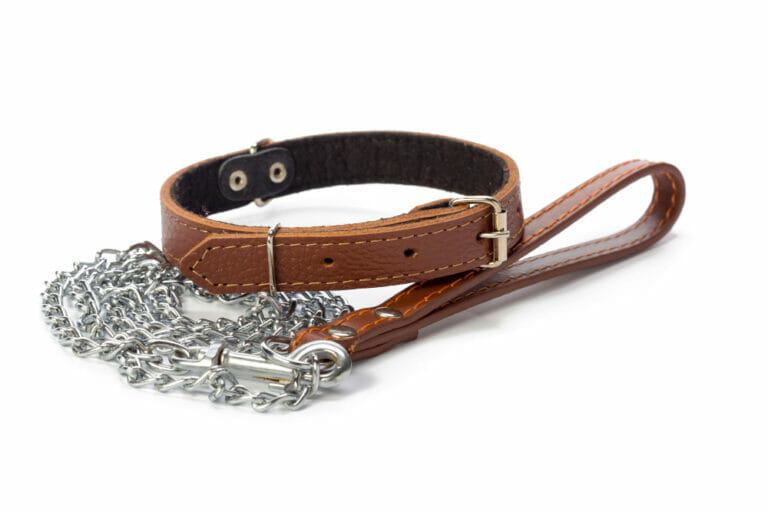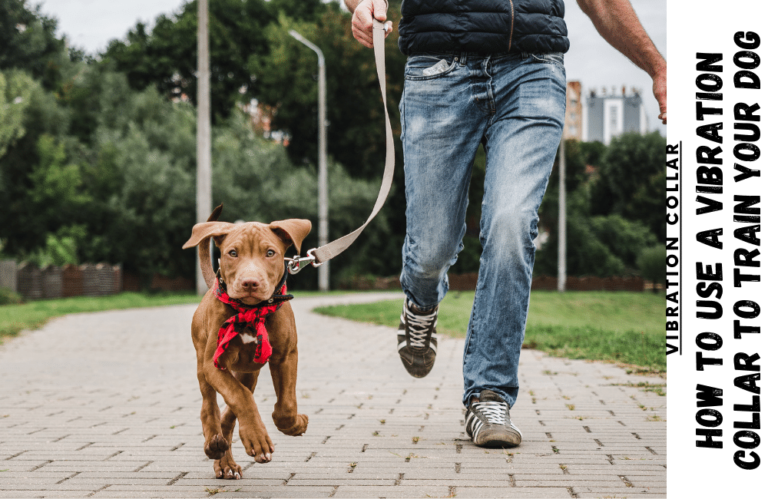How to Make a Bumper Collar For Your Blind Dog
Welcome to this article, where we will learn how to create a bumper collar for our furry friends with limited vision. This essential tool can improve their quality of life and ensure they stay safe while enjoying their daily activities. So, let’s start and make something that will bring joy to our four-legged companions! But before we begin, always remember that just because your dog has a disability does not mean that they are loved less. They deserve the same love any other dog would.

Caring for themselves will mean you get loyalty from them for the rest of your life.
How to Make a Bumper Collar
Creating a bumper collar for your blind dog may seem daunting at first, but it can be a fun and rewarding project with a little effort. Making a bumper collar is just as easy as creating a chain collar but with the benefit of helping your furry friend navigate their surroundings easily.\
To get started, simply scroll down to discover the materials and step-by-step instructions needed to make a unique and expressive bumper collar for your furry companion. With a little creativity and patience, you can create a custom collar that looks great and provides added safety and comfort for your beloved pet. So, let’s get started and make a collar that your blind dog will love!
Materials Needed
To create a blind dog bumper collar, the following are the materials you will need:
- A wide collar made of sturdy material
- A few pieces of foam or cushioning material
- A strong adhesive, such as industrial glue
- A pair of scissors or a utility knife
- Some brightly colored duct tape or fabric
Step 1: Measuring the Collar for your dog
The first step is to measure the width and length of the collar you have chosen to use. You want the bumper to be wider than the collar to extend beyond the edges and protect your dog’s face and head. Cut two pieces of foam or cushioning material to the same width as the collar and about twice as long as the collar.
Step 2: Attaching the Foam on the bumper collar
Using a strong adhesive, attach one of the foam pieces to the inside of the collar, ensuring it is centered and evenly spaced. Allow the glue to dry completely before proceeding to the next step.
Step 3: Adding the Bumper to the bumper collar
Fold the second piece of foam in half lengthwise and attach it to the outside of the collar using the adhesive. Ensure that the folded edge is facing outwards and that the foam is positioned to extend beyond the edges of the collar.
Step 4: Finishing Touches to the bumper collar
Once the adhesive has dried, you can add bright duct tape or fabric to the bumper to make it more visible and attractive. This will also help your dog to spot the bumper easily and avoid collisions while moving around.
Step 5: Adding Reflective Tape on the bumper collar
You can add reflective tape to the bumper collar to increase visibility during low-light conditions. Cut small strips of reflective tape and attach them to the outside of the collar. Make sure to position the video visibly from all angles.
Step 6: Testing the bumper Collar
Before using the bumper collar on your dog, it is essential to test it out. Put the collar on your dog and observe its behavior. Make sure the collar is not causing any discomfort or hindering their movement. You can also simulate different scenarios to ensure the bumper collar offers the necessary protection. If any discomfort happens, click here to see how to effectively treat and prevent collar sores in dogs.
Step 7: Customizing the bumper Collar
You can customize the bumper collar by adding your dog’s name or a fun design using fabric paint or markers. This personal touch can make the collar even more special and unique to your furry friend.
Step 8: Regular Maintenance of the bumper collar
It is essential to regularly check the bumper collar for any signs of wear and tear. Replace any damaged foam or cushioning material and ensure the adhesive is strong. Additionally, make sure the reflective tape is still visible and replace it if necessary.
Step 9: Gradual Introduction of the bumper collar to your dog
If your dog is not used to wearing a collar, it is essential to introduce the bumper collar gradually. Start by having your dog wear the collar for short periods and gradually increase the duration. This will help your dog get used to the collar and minimize discomfort or stress.
Step 10: Adding Humor
You can add a touch of humor to your bumper collar. Use brightly colored duct tape to create funny faces or add silly accents to the foam pieces. This will make the bumper collar more appealing and bring a smile whenever you see it.
Step 11: Sharing the Joy
Once you have created your blind dog bumper collar, consider sharing the joy with other dog owners who may have a visually impaired pet. You can offer to make bumper collars or even teach them how to make their own. This is a great way to spread awareness about the challenges faced by blind dogs and to create a community of caring pet owners.
Step 12: Supporting Animal Charities
As a tribute to Robin Williams’ philanthropic spirit, you can donate some of the proceeds from any bumper collars you make to animal charities supporting blind dogs. This is a great way to give back to the community and honor the memory of a beloved comedian with a passion for helping others.
Final Thoughts on the Bumper Collar
Making a bumper collar for your blind dog is a simple and effective way to improve their quality of life and keep them safe during their daily activities. With simple materials and creativity, you can create a unique and valuable tool to bring you and your furry friend joy.
Constantly monitor your dog’s behavior when using a bumper collar, and adjust it as necessary to ensure that it fits comfortably and provides adequate protection. With patience and effort, you can create a custom-made bumper collar perfect for your furry companion’s needs.
In conclusion, let’s take a moment to appreciate our furry friends’ companionship and how we can improve their lives. Whether through a simple bumper collar or other creative solutions, let’s continue to celebrate and care for our pets in the way they deserve.
FAQs
What is a bumper for dogs?

A bumper for dogs is a protective collar that is designed to help prevent injuries and accidents, especially for dogs that are blind or visually impaired. Bumpers are typically made from soft materials like foam or neoprene, and they fit snugly around the dog’s neck to provide a cushion in case the dog bumps into something.
What is the most secure collar for a dog?

The most secure collar for a dog depends on the dog’s needs and behavior. For example, a harness may be more secure for a dog that tends to pull or escape from its collar, while a Martingale collar may be more secure for a dog with a slender neck. Choosing a collar that fits properly and is made from high-quality materials is essential to ensure maximum security and safety.
What type of collars are best for dogs?

The best type of collar for a dog depends on the dog’s individual needs, behavior, and size. Some popular collars include flat collars, Martingale collars, harnesses, and head collars. It’s essential to choose a collar that fits properly and is comfortable for the dog and to consider any specific needs or concerns the dog may have.





